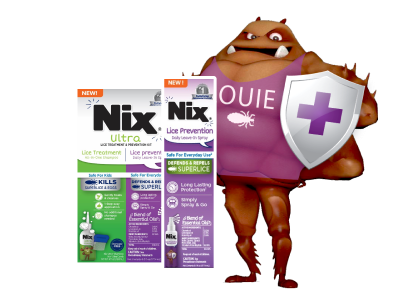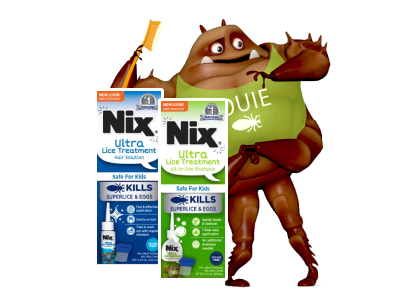
The Truth (& Myths) About Head Lice
No one likes the thought of bugs crawling around in their hair or their kid’s hair. In fact, the fear of this often leads to misconceptions and myths that can be hard to distinguish from the truth. So, we’re here to give you the facts about lice and address some common myths. This way, you can be better prepared and ready to act when someone you know or love gets head lice.
Myth #1: People with dirty hair get lice. Fact: Anyone with clean or dirty hair can get lice.
Lice are attracted to blood, not to dirty hair. How well or often someone washes or how clean or cluttered their home is has nothing to do with getting head lice. In fact, according to the Mayo Clinic, head lice prefer clean hair so they can better attach to the hair shaft and lay their eggs.
Myth #2: Lice jump from head to head. Fact: Lice cannot jump or fly.
Lice can only crawl. They cannot jump or fly from head to head. Head lice spread through close contact or sharing of personal items such as a brush, comb, hat, headphones, towel, or bedding. Lice can fall off the head but, unless they happen to fall directly onto another head or a hat or other item that is quickly shared, they are not likely to survive and transfer to another person.
Head lice survive less than one to two days if they fall off the scalp and can no longer feed. Nits (lice eggs) usually die within a week if they’re not kept at the same temperature found close to the human scalp.
Myth #3: An exterminator is needed to clear lice from the home. Fact: You do not need to fumigate your whole house if your kid has head lice.
If having an exterminator fumigate your home gives you peace of mind, then go ahead and have that done. However, this is not necessary and there are steps you can take at home to prevent lice from spreading to other members of the family.
You will want to separate clothing and other personal items within your household. You can also use Nix® Lice Killing Spray to kill lice, eggs and even bed bugs on mattresses, furniture, car interiors or other items that are not easily cleanable. Remember head lice cannot live long without a host because they need blood to survive, so the risk of infestation due to lice falling on your car seats, carpets or furniture is small. You can also help protect you family against future lice infestations by using lice prevention products such as the Nix Lice Prevention Daily Leave-In Spray. This easy to use hair spray repels superlice and can help give you peace of mind as you check and clear your home of any remaining lice.
Myth #4: An itchy scalp means you have lice. Fact: There are many causes of an itchy scalp and lice is just one.
This might surprise you, but lice don’t always cause an itchy scalp. And when they do, the itching is due to an allergic reaction to lice bites, so this symptom can take time to develop. Skin and inflammatory or autoimmune conditions are the most common causes of an itchy scalp. This includes dandruff, seborrheic dermatitis, psoriasis, eczema and atopic dermatitis. A scalp can be itchy due to an allergy, infection or medication side effect too. If you want to learn more about how to tell if itchiness is due to lice or something else, and how to recognize signs of lice and do a head check, read "My Kid’s Head Is Itchy—Is It Lice?" on our blog.
Myth #5: Only kids can get head lice. Fact: Adults absolutely can get head lice.
While we are more used to hearing about kids getting head lice, adults can certainly get head lice too, often from their own kids. Lice spread through close contact and the sharing of personal items, so if you don’t know your kid has lice or don’t take steps to prevent head lice from spreading, you could get lice too. To stop lice from spreading, consider using a lice prevention product on yourself and other family members, like Nix® Lice Prevention Daily Leave-In Spray. (It even conditions and detangles hair!)
The life cycle of lice is important to keep in mind when trying to prevent and treat lice. Adult lice can live for about 30 days on a human head. Female adult lice can lay 4 to 8 eggs per day. These eggs—the nits—take about one week to hatch and about another week to become adults. That’s why it’s important to do thorough and repeated head checks for lice—looking for adult and baby lice as well as eggs—when you know there has been a lice infestation.
Where to Get Answers to Your Questions About Lice
You can find more facts about head lice and get answers to your questions on our Frequently Asked Questions page. Across our website, you will find details on How to Check for Lice, How to Prevent Lice, and How to Treat Lice. We recommended browsing (and buying) our lice products and tools before an infestation, so you can be ready to act quickly if someone in your family does bring home lice.



